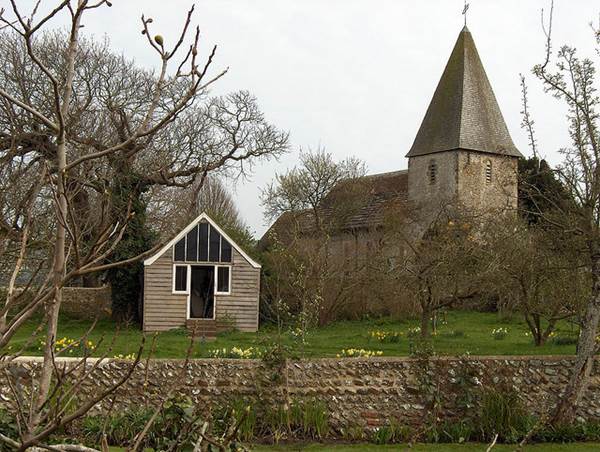 Writing Shed in the country retreat of the novelist Virginia Woolf (Monk’s House), Rodmell, Lewes, Sussex, UK – Photo Courtesy: Oliver Mallinson Lewis
Writing Shed in the country retreat of the novelist Virginia Woolf (Monk’s House), Rodmell, Lewes, Sussex, UK – Photo Courtesy: Oliver Mallinson Lewis
Roald Dahl had one, Dylan Thomas and Virginia Woolf had one and even rock legend Roger Waters had one. They’re used for creative hideaways, office space, storage or even just a place to escape from the family; they’re the common garden shed and appear in over 11.5 million British backyards.
According to The Guardian, a shed is an ideal place to start a business with shed-based businesses contributing more than £6.1 bn to the UK GSP in 2012. Alex Johnson, author of Shedworking: The Alternative Workplace Revolution, thinks “shedworking enables a clearer line of demarcation between where you live and where you work, which, psychologically, is preferable. Also, it’s easier to prevent those you live with from invading your work space, while your spare bedroom can remain just that. Building a garden office can add value to your property and it’s far cheaper than buying a house with an extra room. Also, working in a shed is much more fun.”
Quality is king
Whether you’re running a business from your shed or simply using it for extra space, entrepreneur and shed-worker Artemis Russell believes that your shed should be “a good quality one, otherwise everything will get damp” and that it should be as big as you can afford. She thinks that with a nice big window, you’ll get more light and sunshine which will create a nicer environment.
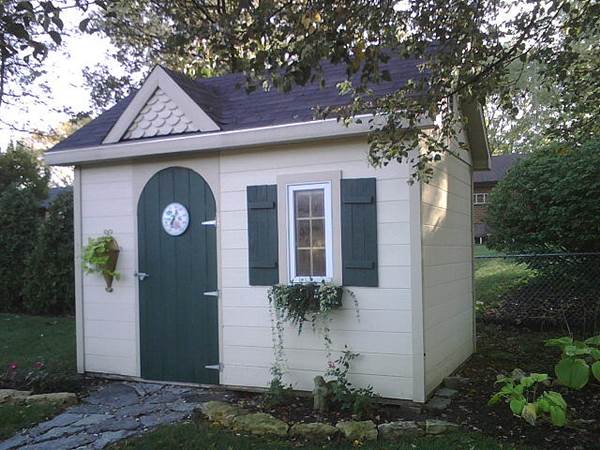 Photo Courtesy: Shed King
Photo Courtesy: Shed King
The Telegraph’s William Langley believes that “between the British and their sheds lingers an ancient covenant – part mystical, part practical, but mostly inexplicable” and spoke to the organiser of National Shed Week, Andrew Wilcox about the backyard boon of the Brits. Wilcox said, “there was a time when there was basically only one type of shed but that’s certainly not the case any more. People are now using them as pubs, cinemas, temples and smoking dens. At the moment, it’s trendy to have an eco-shed with solar panels.”
It all sounds very nice, but if you’ve ever looked at getting a shed or even a small storage cabinet, you’ll know just how expensive shed building can be. So how can you get your own shed going if you’re on a tight budget? With today’s economy still sluggish and with most of us with less disposable income than ever, it’s hard to justify spending a month’s wage on a shed.
Determine your budget
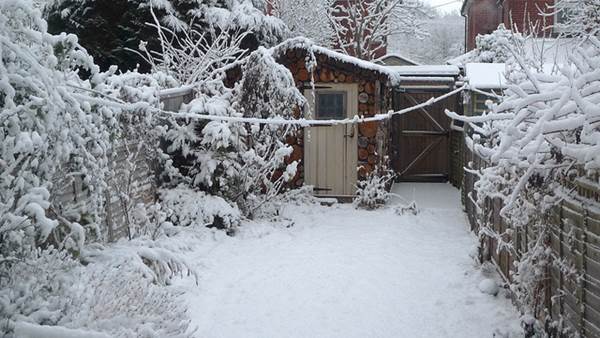 A Cosy Garden Shed – Make your shed weatherproof against snow & rain. Photo Courtesy: Henry Burrows
A Cosy Garden Shed – Make your shed weatherproof against snow & rain. Photo Courtesy: Henry Burrows
This might sound obvious, but set yourself a realistic limit for your shed. Once you have your budget, you can start planning the build and determining factors like how big it can be, who will build it and what it will be used for and whether it needs to be weatherproof. If you plan on using your shed for a future-business, then it pays to invest a little more in the building to make it comfortable and accommodating. You will be able to claim the costs against a business if it’s used solely for business.
Kit-shed
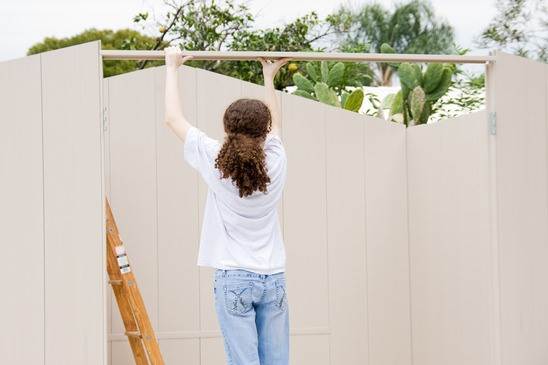
The simplest way to get a shed in your yard is to buy a DIY shed kit. These are available at hardware stores, gardening outlets and various other outdoor equipment and timber retailers. You can purchase a shed for under £100, delivered, if you only need something small and windowless for storage. But if you’re wanting something a little more substantial, you will have to spend upwards of £300. For sheds that are more like a spare room, you’ll be looking at well over a £1000 – but it’s a lot cheaper than moving to a bigger house.
Free plans
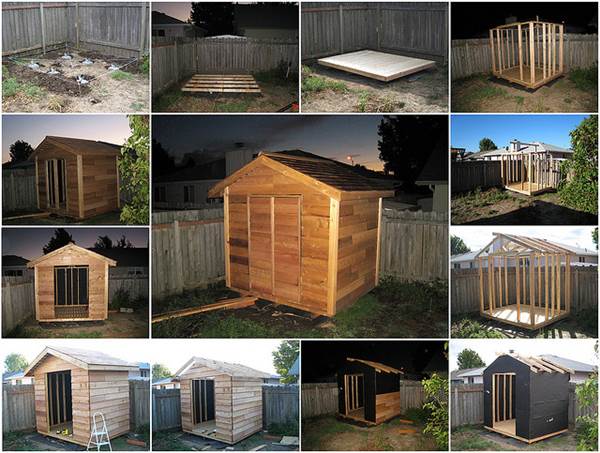 Above: Christopher, a Software Engineer from Salem, Oregon, USA takes immense pride in building this garden shed single-handed (yes, some of ’em software guys do get away from their computer screens!). He says, “I got a shed kit from Home Depot and built the whole thing myself. What an experience. I was very proud of it. The only thing I have left is to put a transparent stain on it. The kit is produced by Star Lumber in Washington.” Photo & Info Courtesy: Mr. Thomas
Above: Christopher, a Software Engineer from Salem, Oregon, USA takes immense pride in building this garden shed single-handed (yes, some of ’em software guys do get away from their computer screens!). He says, “I got a shed kit from Home Depot and built the whole thing myself. What an experience. I was very proud of it. The only thing I have left is to put a transparent stain on it. The kit is produced by Star Lumber in Washington.” Photo & Info Courtesy: Mr. Thomas
If you’re handy with a hammer, consider building your own shed from scratch. This method will allow you to resource all your materials at the best prices and will mean you can have a little more control over the design and look of the shed.
There are countless blogs and instructional videos online that will help you get started and show you step-by-step how to construct your own shed.
You can get free shed plans online with only a few clicks.
Recycle and save
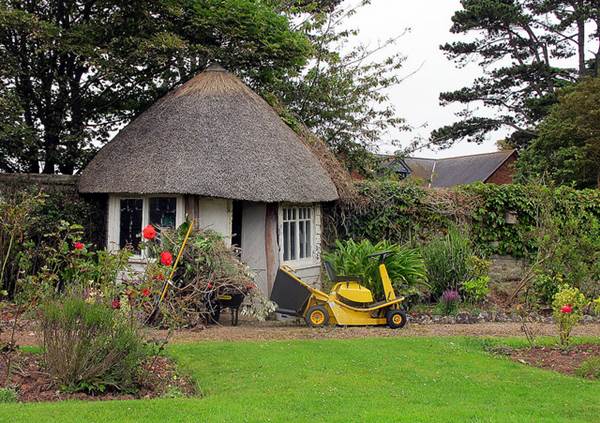 An ‘artsy’ garden shed in The Barn, in Exmouth, Devon, England, a seaside house (now a hotel) dating from 1896 and designed in Arts and Crafts style by the architect Edward Schroeder Prior – Photo Courtesy: Crab Chick
An ‘artsy’ garden shed in The Barn, in Exmouth, Devon, England, a seaside house (now a hotel) dating from 1896 and designed in Arts and Crafts style by the architect Edward Schroeder Prior – Photo Courtesy: Crab Chick
If you’re going to build your own shed, you can save even more money on sourcing your materials from places like waste repositories, car boot sales and reclaimed material yards. While you might not get exactly the right size and shape timber and hardware, you will be able to cut it to size or make do with what you can get your hands on.
Second hand
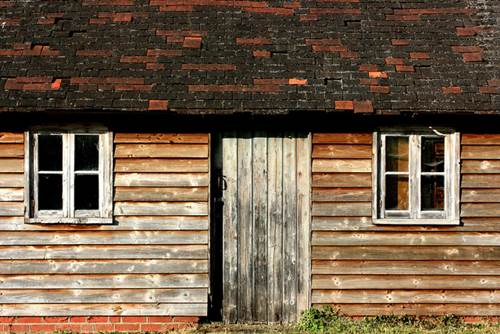
Second hand doesn’t come instantly to mind when you think of sheds, but actually you can buy disassembled sheds on second hand sites like Gumtree and Preloved for a fraction of the price of a new one. Any ill-fitting or broken parts can easily be replaced especially if it’s of timber construction.
Cutting corners can cost you more
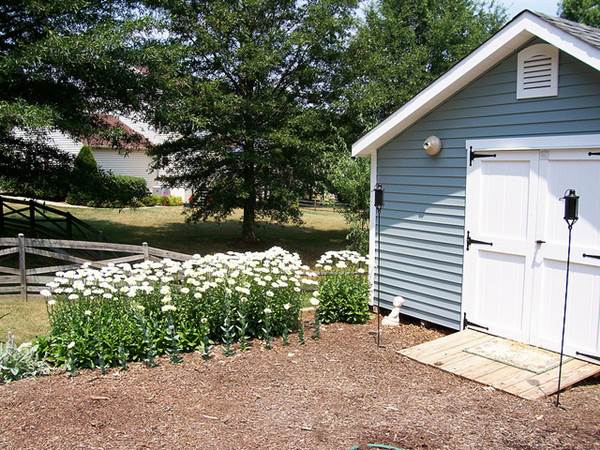 Daisies outside a garden shed on a sunny day – ain’t that nice?! Photo Courtesy: Cdanna
Daisies outside a garden shed on a sunny day – ain’t that nice?! Photo Courtesy: Cdanna
If you’ve managed to whittle away your shed costs to an impressive figure, remember that cutting too many corners can actually end up costing you more money. If you’re going to store valuable family items in the shed, then make sure it’s waterproof and secure. You don’t want to have to replace water-logged or stolen goods. If you want use your shed for work or hobbies, make sure you can get an electrical plug inside it for light and heating and make it secure.
 Jessica Bourne is an employee at Chester based online banking provider Eccount Money. Jessica loves to share her budgeting advice aimed to enable people to better manage their income, stay debt-free and overcome the increasing cost of living.
Jessica Bourne is an employee at Chester based online banking provider Eccount Money. Jessica loves to share her budgeting advice aimed to enable people to better manage their income, stay debt-free and overcome the increasing cost of living.
Leave a Reply